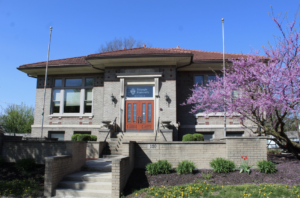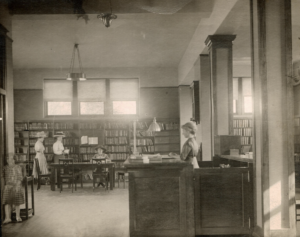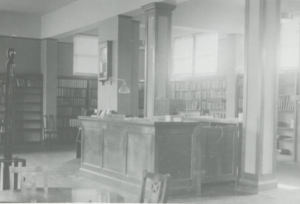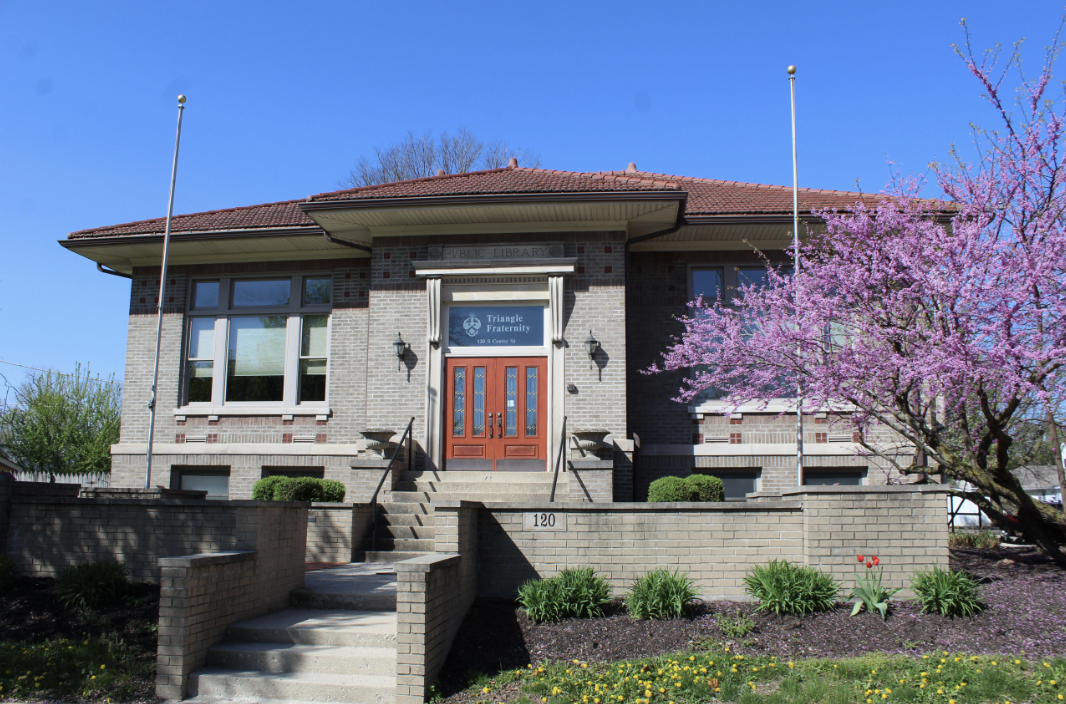Carnegie Library’s Rich Legacy in Plainfield
Writer / Jamie Hergott
Photography Provided
The Carnegie Library in Plainfield is part of a group of 2,509 libraries built around the world with money donated by American industrialist Andrew Carnegie. A great majority of those were built in Indiana, with Plainfield’s Carnegie Library opening in 1913 at 120 South Center Street, according to “50 Historic Buildings of Plainfield, Indiana: The Places and People” by Sarah Wright.
Before the gray brick library was built, the lot was home to John Hanna’s livery stable, where horses were stabled. For 50 years before the library opened, this location served as a central point for daily life, work and commerce in Plainfield.
By 1910 the Plainfield library was already in its second location at 130 North Vine Street. Bursting at the seams, the library board looked for a new location. There were eight other locations considered, but the board finally settled on the lot where the livery stood, as its location would serve a town growing to the east and south. The Andrew Carnegie Library Fund notified them of a grant opportunity in 1911, and they applied.
Reann Poray, manager of the Indiana Room at the Plainfield-Guilford Township Public Library, is impressed to this day by the importance the board placed on preserving and growing the library services back in the early 1900s.
“They were willing to collaborate with the foundation to improve the library for the town of Plainfield,” Poray says. “They knew that education, books and library services were important. They didn’t want to keep the status quo, and they didn’t want to stay in a small library. They knew that when the community grows, the facility needs to grow with it.”
The Carnegie Library was designed by Indianapolis architect Wilson B. Parker and built by Charles F. Duncan, a contractor from Morgan County. The livery stable was demolished and its materials were sold. The library was then built with $225 worth of gray brick. That December, in 1912, the Vine Street Library was closed so books could be packed, transferred and re-shelved in the brand-new library.
 The Carnegie Library opened on January 27, 1913. There was a children’s reading room, an adult reading room, a reference area and a checkout desk, with an assembly room and kitchen in the basement. During that year Indiana sculptor James Paxton Voorhees displayed two of his bust designs in the library. These busts, one of Napoleon and one of Thomas Jefferson, were commissioned by the government for the St. Louis World Fair. The Thomas Jefferson bust is still on display today in the Plainfield-Guilford Township Public Library’s Indiana Room.
The Carnegie Library opened on January 27, 1913. There was a children’s reading room, an adult reading room, a reference area and a checkout desk, with an assembly room and kitchen in the basement. During that year Indiana sculptor James Paxton Voorhees displayed two of his bust designs in the library. These busts, one of Napoleon and one of Thomas Jefferson, were commissioned by the government for the St. Louis World Fair. The Thomas Jefferson bust is still on display today in the Plainfield-Guilford Township Public Library’s Indiana Room.
It wasn’t long before the library underwent renovations, overseen in large part by Mayme Snipes, who became librarian in 1909. Ahead of her time, she introduced a children’s story hour and began cataloging photos and newspaper articles. If that wasn’t enough, she was also very focused on growing the impact of the library in the community.
She wanted to make books and resources accessible, so the library packed up books on various topics like economics and agriculture, along with beloved fiction books, for schools and homes throughout the township. Many cumbersome boxes led to the design of Indiana’s first bookmobile, which had space for 200 books inside. While this bookmobile no longer exists, a book bike, a book van and other outreach programs do exist at the library.
“I love that they were progressive for 1912 in rural Indiana,” Poray says. “They were really forward-thinking, and realized that education and library services were important for the entire community.”
In an eerie foreshadowing of 2020, the library rooms were closed for a couple weeks due to the flu epidemic in 1919. After this, however, the library continued to grow into one of the town’s most popular and beloved buildings. Its collection reached more than 10,200 volumes in 1963, and circulation reached 35,000 per year.
That board was forced to find another location to build a new library, and the Carnegie building was sold to a business owner who renovated the building into a home and business office. After going through several owners, the building is now home to the national headquarters for the Triangle Fraternity, a fraternity of engineers, architects and scientists. A decorative plaza adorns the front of the building, with locals passing by and learning about one of Plainfield’s beloved, historic treasures.
Have Plainfield photos to share? The Indiana Room is always looking for pictures to add to their physical and digital collection. Contact the Indiana Room at askindiana@plainfieldlibrary.net to donate or scan/return your piece of Plainfield’s history.





